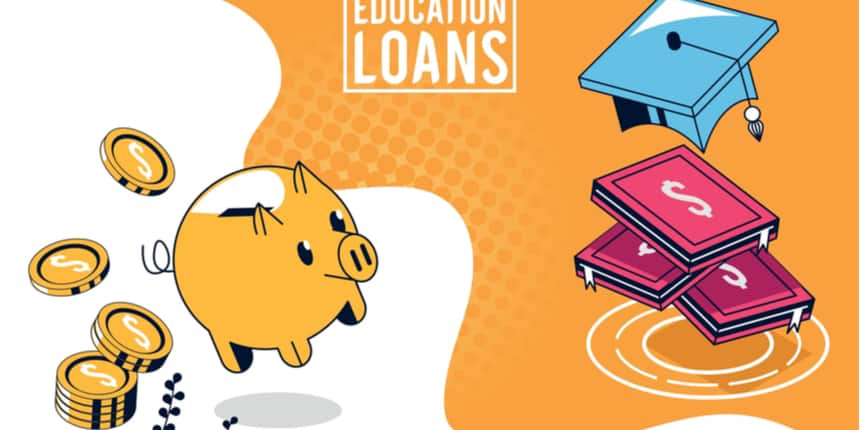5 Ways An Education Loan Is Different
It is common to hear people talk of the rising costs of goods and commodities because they deal with these frequently. If you ask the parent of a child transitioning from school to college, they would stress on how the cost of education has risen more rapidly. While the cost of certain education streams in government colleges and universities is kept relatively low, for many people even that may be prohibitive.

For instance, the per-semester fee at Indian Institute of Technology (IIT) Delhi is at least Rs 1 lakh; now over four years, this works out to Rs 8 lakh; the costs of hostel, mess and miscellaneous expenses are over and above this figure. To reduce the burden of fees on parents of college-going students, the education loan system has become a boon. It is also one of the most convenient ways for students to pursue their education without overly worrying over the costs. As quality education ensures better career prospects in the future, borrowing for a good quality education is a wise financial move.
What Is An Education Loan?
An education loan can be handy for students and parents to fund higher education (after school), when money is running a bit low. The loan is available for education in India as well as abroad, depending on conditions and eligibility criteria stipulated by the lenders. The loan is offered by leading banks and NBFCs (non-banking financial companies) and is a priority sector for lending to promote education. The amount that is lent is mostly towards fees and cost of education, including books and laptops in certain cases. Additional expenses such as hostel fees and food, may or may not be covered.
Lenders have a clear list of courses that qualify for the loan and the loan itself may be in the name of the student, the primary applicant. However, the loan is disbursed only with a co-signer, like parents, sibling, guardian or spouse. This doesn’t mean that the amount of loan is paid out to the parent or the student; it is paid directly to the institution where one plans to study.
In cases where the quantum of loan is above the prescribed limit, one may need to furnish collateral to support the loan. The tenure of the loan is for the duration of the education and the loan repayment commences one year after the completion of the course. The repayment of the loan can be up to 15 years from the year of completion of the loan.
How Are Education Loans Different?
There are a lot of differences between education loans and other forms of loans such as home, car or personal loans and credit card outstanding. What borrowers need to keep in mind is that an education loan is for the purpose of education only with practically no gray areas or scope for ambiguity.
A home or car loan is sanctioned only on a down-payment and the loan sum may be used for registration of the house or accessories included in the vehicle. In case of personal loans, purpose is often not asked as long as one qualifies for the loan. It is also the same with a credit card purchase which is converted into a loan.
A unique aspect of the education loan is that the money is not disbursed to the applicant or in lump-sum. A safety check is maintained by paying the loan sum directly to the educational institution. Also, to ensure that the student is serious, each semester or annual fee is disbursed only on production of results that indicate passing of exams. So, if a student drops out, the loan stops and the student is liable to pay the outstanding.
The table below shows the differences and similarities between the different types of loans.
Differences Between Education And Other Loans
Education Loan | Home or Car Loan | Personal Loan, Credit Card | |
Type Of Loan | Unsecured: When borrowed within prescribed limits, nothing is provided as collateral against the loan | Secured: The ownership is with the lender till loan is repaid | Unsecured: No collateral is provided under these loans |
Loan Tenure | Duration of studies or course | Borrower can select, but has specific minimum and maximum duration | Typically short duration of 3-5 years for personal loan; credit card loan is for a much shorter period. |
Repayment Structure | Repayment starts a year after the completion of the course | Repayment starts immediately after loan disbursal | Repayment starts immediately after loan disbursal |
Tax Benefits | Claim Income Tax benefits under Section 80E on the interest part of the loan repayment | Claim Income Tax benefits on principal and interest components of the loan | No tax benefits |
Structure Of Loan | Loan is in the student’s name and has no implication on degree awarded on the completion of the course | The lender retains ownership till such time as the loan is fully repaid | The loan repayment starts immediately or with very short moratorium |
Narayan Krishnamurthy is a believer in financial literacy and awareness, and works on promoting both. For the past two decades he has been writing to simplify personal finance. He also works as a personal finance trainer.
Applications for Admissions are open.
As per latest syllabus. Physics formulas, equations, & laws of class 11 & 12th chapters
JEE Main Important Chemistry formulas
Get nowAs per latest syllabus. Chemistry formulas, equations, & laws of class 11 & 12th chapters
JEE Main high scoring chapters and topics
Get nowAs per latest 2024 syllabus. Study 40% syllabus and score upto 100% marks in JEE
JEE Main Important Mathematics Formulas
Get nowAs per latest syllabus. Maths formulas, equations, & theorems of class 11 & 12th chapters
